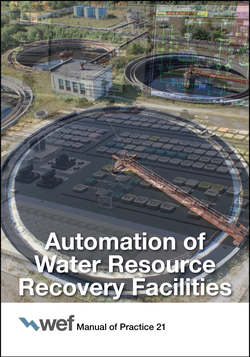Читать книгу Automation of Water Resource Recovery Facilities - Water Environment Federation - Страница 144
3.6 Coordination with Other Design Disciplines
ОглавлениеProcess and instrumentation diagrams are the foundation of I&C engineering design. They are an essential element of the I&C design package. Process and instrumentation diagrams are multidiscipline drawings that present information from mechanical, process, I&C, and electrical groups. Mechanical and process groups use P&IDs to show various piping connections between process equipment, including main process equipment found in WRRFs (i.e., process tanks, wet wells, channels, pumps, bar screens, grinders, and specialized equipment), manual and automated valves, pipe reducers, in-line instruments, special piping requirements (double-wall pipes for chemicals lines, etc.), vendor-supplied packages, and interconnections to the process. Electrical groups use P&IDs supplemented by other documents (e.g., motor lists and equipment lists) to determine power requirements for instruments and motorized equipment, signal wiring requirements, networking requirements for the control system, interfaces to MCCs and variable-speed drives, and so on.
Mechanical specifications, or “specialty equipment specifications”, often have control specifications embedded in their sections. The mechanical or process engineer should be cognizant of the need to modify these control specifications to match the P&IDs; in some instances, P&IDs may need to be adapted to these controls. Control functions (e.g., interlocks, signal conditioners, timers, proportioning/integral/derivative controllers, etc.) are also an important part of the mechanical specifications and must be clearly identified using the ISA S5.1 symbols and guidelines.
